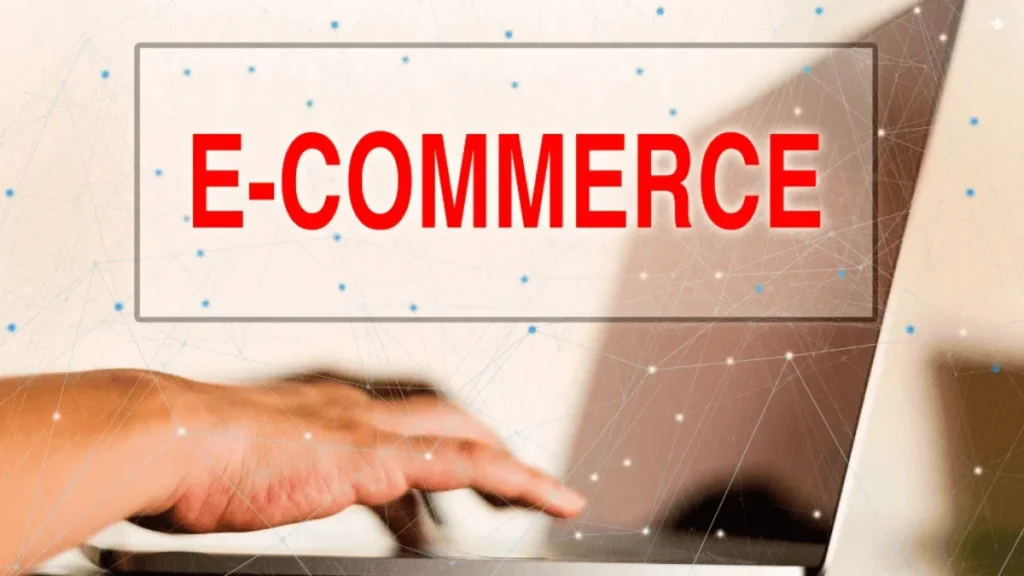As an Amazon seller, I’ve learned that effective repricing is more than just adjusting numbers; it’s about strategically positioning your products in a competitive landscape. Through leveraging automated tools and analyzing market trends, I can optimize profit margins while avoiding common pitfalls. However, the nuances of Amazon’s pricing algorithms and competitor behaviors can be complex.
Let’s explore how to navigate these challenges to refine your repricing strategy effectively.
Key Takeaways
- Regularly monitor competitor prices and adjust your pricing strategy to stay competitive in the dynamic Amazon marketplace.
- Utilize automated repricing tools to save time, ensure real-time adjustments, and maintain profit margins.
- Analyze seasonal demand trends and adjust prices accordingly to maximize sales during peak periods.
- Account for all Amazon fees in your pricing strategy to protect your profit margins and avoid unexpected losses.
- Highlight unique product features and offer bundled deals to enhance perceived value and differentiate from competitors.
Why Amazon Repricing Is Crucial for Boosting Your Sales?

When I consider the competitive landscape of Amazon, it’s clear that effective repricing is not just a tactic; it’s a necessity for anyone serious about boosting sales. In this environment, understanding and implementing repricing strategies can make all the difference.
Prices fluctuate constantly, and staying competitive means adjusting my prices in real-time to not only attract buyers but also to guarantee I’m maintaining healthy profit margins.
If I neglect competitive pricing, I risk losing market share to sellers who are more agile. Through leveraging data-driven insights, I can pinpoint ideal price points that enhance sales without sacrificing profitability.
Strategic repricing is the key to thriving in Amazon’s ever-evolving marketplace, allowing me to maximize my sales potential.
5 Proven Repricing Tips Every Amazon Seller Should Use

As I analyze the competitive landscape on Amazon, I realize that consistent monitoring of competitor prices can greatly enhance my strategy.
Implementing dynamic repricing tools allows me to respond swiftly to market changes while setting clear minimum and maximum price limits helps me protect my margins. Adjusting prices based on demand trends and testing different price points can uncover ideal strategies to maximize my sales.
1. Monitor Competitor Prices Regularly
Monitoring competitor prices regularly isn’t just a good practice; it’s vital for staying competitive in the ever-evolving Amazon marketplace. To refine my pricing strategy, I focus on several key components:
- Track competitor prices: Knowing where you stand helps in making informed decisions.
- Utilize real-time data: This guarantees your pricing reflects market dynamics accurately.
- Adjust pricing strategy swiftly: Reacting promptly is critical for capitalizing on market shifts.
- Consider automated repricing: It saves time and guarantees you’re always competitive without constant manual checks.
2. Use Dynamic Repricing Tools
Staying competitive in the Amazon marketplace requires more than just regular price monitoring; it demands a strategic approach to repricing. I’ve found that using dynamic repricing tools can greatly enhance my selling strategy.
These algorithmic repricing tools allow for real-time repricing, ensuring my prices remain competitive without constant manual intervention. Through implementing a dynamic pricing strategy, I can make swift pricing adjustments based on competitor actions, market trends, and demand fluctuations.
This not only keeps my listings attractive but also boosts my chances of winning the Buy Box. Ultimately, leveraging these tools helps me maintain competitive prices while maximizing profit margins, allowing me to focus on other essential aspects of my business.
3. Set Minimum and Maximum Price Limits
Setting minimum and maximum price limits is essential for maintaining a balanced repricing strategy on Amazon. Through establishing these boundaries, you can protect your profit margins while remaining competitive. Here are four key benefits of setting these limits:
- Minimum Price Threshold: Guarantees you don’t sell below a sustainable profit margin.
- Maximum Price: Prevents pricing yourself out of the market, keeping your products attractive.
- Pricing Rules Compliance: Helps adhere to Amazon’s policies, avoiding potential account issues.
- Competitive Edge: Positions you favorably against competitors by allowing algorithmic repricing to adjust within your defined limits.
Incorporating these strategies not only optimizes your pricing but also enhances your overall selling effectiveness.
4. Adjust Prices Based on Demand Trends
Understanding how to adjust prices based on demand trends can greatly enhance your repricing strategy on Amazon. I’ve found that utilizing advanced repricing tools is crucial for staying competitive.
Through analyzing market conditions, I can identify when to increase or decrease prices effectively. For instance, if demand surges for a particular product, I leverage algorithmic repricing software to automatically adjust my prices in real time.
This guarantees I capture maximum profit while remaining attractive to buyers. Conversely, during low-demand periods, I can strategically lower my prices to stimulate sales.
Integrating these insights into my pricing strategy not only optimizes my listings but also helps me respond proactively to market fluctuations, ultimately improving my sales performance.
5. Test Different Price Points for Best Results
While it might seem counterintuitive, testing different price points can considerably impact your sales and profitability on Amazon.
Through strategically adjusting your pricing, you can find the ideal price that boosts your sales volume without sacrificing margins. Here’s how to approach it:
- Analyze competitors: Understand their pricing strategies and identify gaps.
- Experiment with increments: Make small price adjustments to gauge customer response.
- Monitor sales data: Use analytics to see which price points generate the most sales.
- Refine your strategy: Regularly revisit your pricing based on market trends and competitive pricing.
This proactive approach can help you enhance your pricing strategy, ensuring you stay competitive and maximize your earnings in the ever-evolving Amazon marketplace.
How Amazon’s Repricing Algorithm Works: Key Insights?

As I explore Amazon’s repricing algorithm, it’s clear that this complex system is designed to optimize competitive pricing while considering various market factors. Utilizing advanced repricing algorithms, it analyzes competitors’ prices in real-time and adjusts my selling price accordingly.
This automatic repricing process can be greatly enhanced with effective repricing software that leverages algorithmic repricing capabilities. Through setting specific parameters, I can guarantee my prices remain competitive without sacrificing profit margins.
The algorithm considers not just the lowest price but also factors like shipping costs and seller ratings, giving a holistic view of the market landscape. Understanding how this algorithm operates allows me to strategically position my products for maximum visibility and sales potential.
The Impact of Repricing on Your Amazon Seller Account Health

When I actively engage in repricing my products on Amazon, I must consider its potential impact on my seller account health. Effective repricing can enhance my seller performance and maintain a high seller rating, but it also comes with risks. Here are some key factors I keep in mind:
- Automated Pricing Rule: Using these tools strategically can help me stay competitive without constant manual adjustments.
- Negative Feedback: Aggressive repricing can lead to customer dissatisfaction, resulting in negative feedback.
- Price Wars: Constantly undercutting competitors can erode my profit margins.
- Market Dynamics: Understanding market trends helps me set realistic pricing strategies.
Balancing these elements is vital for sustaining a healthy seller account.
8 Common Repricing Mistakes to Avoid on Amazon

When I think about common repricing mistakes on Amazon, a few critical pitfalls stand out. Overpricing or underpricing can greatly affect sales, and failing to account for Amazon fees can eat into profits.
It is crucial to take into account seasonal demand fluctuations and leverage automated tools to maintain consistent price ranges for ideal results.
1. Overpricing or Underpricing Products
Striking the right balance in pricing is essential for success on Amazon, yet many sellers fall into the trap of overpricing or underpricing their products. I’ve seen firsthand how these common mistakes can derail a pricing strategy. Here are four key considerations to avoid these pitfalls:
- Understand Market Demand: Research what customers are willing to pay.
- Analyze Competitive Pricing: Regularly monitor competitors to stay relevant.
- Avoid Emotional Pricing: Don’t let personal feelings dictate your prices.
- Test and Adjust: Use data to refine your pricing strategy continuously.
2. Not Accounting for Amazon Fees
One of the biggest pitfalls I’ve encountered as an Amazon seller is not accounting for Amazon fees in my repricing strategy. I realized that these fees can considerably impact my profit margins. Through neglecting to factor in shipping costs and other charges, I risked undermining my financial goals.
Here’s a quick overview of the fees I keep in mind:
| Fee Type | Amount | Impact on Profit |
|---|---|---|
| Referral Fee | 15% | Decreases profit |
| Fulfillment Fee | $3.00 | Affects margins |
| Shipping Costs | Varies | Reduces net income |
Understanding these fees helps me refine my seller performance metrics and guarantees that I maintain profitability while remaining competitive.
3. Ignoring Seasonal Demand Fluctuations
Although many sellers focus on maintaining competitive prices year-round, ignoring seasonal demand fluctuations can lead to missed opportunities and unnecessary losses. To optimize your pricing strategy, consider these key factors:
- Identify seasonal trends: Recognize peak seasons for your products to adjust pricing accordingly.
- Monitor inventory levels: Guarantee you have enough stock during high-demand periods to avoid lost sales.
- Adjust competitive pricing: Be flexible with prices during seasonal peaks to maximize profit without sacrificing your competitive edge.
- Plan promotions: Use targeted discounts during off-peak times to stimulate demand and clear out inventory.
4. Using Manual Repricing Instead of Automated Tools
When I think about repricing strategies on Amazon, relying solely on manual repricing can often lead to missed opportunities and inefficiencies. While I appreciate the control it offers, it’s easy to overlook competitive pricing trends and price decreases that could improve my sales.
Automated seller tools are designed to dynamically adjust prices based on real-time market data, something that manual repricing simply can’t match.
This means I might not react quickly enough to competitors, potentially leaving my products overpriced or underpriced. An effective pricing strategy requires agility and responsiveness, which manual methods can hinder.
Balancing manual adjustments with automated solutions can provide the best of both worlds, ensuring I remain competitive without sacrificing oversight.
5. Setting Inconsistent Price Ranges
Inconsistent price ranges can be a silent killer in any repricing strategy on Amazon. When I first started, I learned the hard way that sticking to clear repricing rules is crucial. Here are four key aspects to take into account for effective strategic repricing:
- Set a consistent price range: Avoid wild fluctuations that confuse buyers.
- Monitor your lowest-priced competitor: Confirm your prices remain competitive without going too low.
- Implement an aggressive repricing strategy: This can help you capture sales without alienating customers.
- Regularly review and adjust: Keep your pricing strategy aligned with market trends and changes.
6. Forgetting to Adjust Prices After Amazon Policy Changes
Many sellers overlook the importance of adjusting prices in response to Amazon’s policy changes, which can lead to significant losses. I’ve seen firsthand how failing to adapt can leave third-party sellers at a disadvantage.
Utilizing a reliable repricing solution is vital to navigate these shifts effectively. Without timely adjustments, your competitive pricing strategy may become obsolete, impacting sales and profit margins.
It’s important to stay informed about market dynamics and how they influence your repricing strategies. Automating this process can help you react swiftly to policy changes, ensuring your prices remain attractive.
When I align my pricing with Amazon’s latest guidelines, I not only safeguard my profits but also enhance my position in the marketplace.
7. Failing to Factor in Competitor Pricing Strategies
Adjusting prices according to Amazon’s policies is only part of the equation; understanding competitor pricing strategies is equally essential.
Failing to take into account how your direct competition adjusts their prices can greatly impact your sales rank. Here are four common pitfalls to avoid:
- Ignoring competitor price movements during repricing.
- Relying solely on rule-based repricing without adapting to market trends.
- Overlooking the importance of sales rank in your pricing strategy.
- Neglecting to analyze competitors’ promotions and discounts.
8. Neglecting to Track Your Profit Margins
While it might seem tempting to focus solely on competitive pricing, neglecting to track your profit margins can lead to serious financial pitfalls. I’ve learned the hard way that setting minimum prices without understanding their impact on my base price can erode my profitability.
An Amazon repricer can adjust your prices dynamically, but if you’re not monitoring profit margins, it might push you into a loss zone. This oversight not only affects your bottom line but can also result in negative reviews when customers perceive pricing inconsistencies.
To maintain a thriving business, regularly analyze your profit margins and adjust your strategy accordingly. It’s essential to strike a balance between competitiveness and profitability to guarantee long-term success on Amazon.
How to Use Automated Repricing Tools to Save Time and Maximize Profits?
Automated repricing tools can be a game-changer for sellers like me, especially when it comes to saving time and maximizing profits. Through leveraging advanced repricing software, I can stay competitive in real time without constantly monitoring prices.
Here’s how I use these tools effectively:
- Choose the Right Software: Select a tool that fits my selling strategy.
- Set Clear Pricing Rules: Define my minimum and maximum prices to protect my margins.
- Monitor Competitors: Regularly analyze competitor pricing to adjust my strategy.
- Review Performance: Evaluate sales data to refine my approach continuously.
Understanding the Role of Amazon’s Buy Box in Your Repricing Strategy
Understanding the intricacies of Amazon’s Buy Box is essential for crafting an effective repricing strategy. The Buy Box is where most sales occur, making it vital for sellers to position themselves competitively.
Through utilizing repricers effectively, I can adjust my product prices based on real-time competition, ultimately increasing my chances of winning the Buy Box.
| Factor | Importance | Impact on Strategy |
|---|---|---|
| Buy Box Status | Determines sales opportunities | Prioritize winning it |
| Competitor Prices | Influences positioning | Adjust prices dynamically |
| Repricer Tools | Automate price adjustments | Save time and optimize sales |
Incorporating these elements into my repricing strategy can enhance my overall performance on Amazon.
The Benefits of Repricing Across Multiple Marketplaces for Amazon Sellers
Repricing across multiple marketplaces can greatly enhance my competitive edge as an Amazon seller. Through implementing effective pricing strategies, I can optimize my sales potential and appeal to a broader audience. Here are some key benefits I’ve observed:
- Diverse Fulfillment Options: I can leverage different platforms’ fulfillment options to meet customer demands.
- Enhanced Competitive Analysis: Monitoring prices across various sites helps me stay informed about competitor moves.
- Increased Visibility: Repricing guarantees my products remain visible and attractive to potential buyers.
- Maximum Sales Potential: Through adjusting prices strategically, I can capture more sales opportunities in the crowded e-commerce landscape.
Incorporating this approach allows me to thrive in a dynamic market.
How to Manage Price Wars and Stay Competitive Without Losing Profits?
Maneuvering the complexities of multiple marketplaces can sometimes lead to fierce price wars, where competitors relentlessly undercut each other.
To stay competitive without sacrificing profit margins, I rely on an AI-driven repricing tool. This technology analyzes seller dynamics and adjusts my prices strategically, allowing me to maintain competitive pricing without engaging in a race to the bottom.
| Strategy | Impact on Profit Margins |
|---|---|
| Use AI-driven tools | Optimize prices dynamically |
| Monitor competitor prices | Avoid unnecessary undercuts |
| Set minimum price thresholds | Protect your profits |
| Offer bundled deals | Increase perceived value |
| Focus on customer service | Retain loyal buyers |
Why You Should Focus on Value-Added Features, Not Just Price?
While many sellers get caught up in the competition of lowering prices, I’ve learned that focusing on value-added features can set my products apart in a crowded marketplace.
Through enhancing the customer experience, I not only gain positive feedback but also increase sales. Here are four strategies I’ve utilized:
- Highlight Unique Features: Showcase what makes your product special.
- Offer Exceptional Customer Support: A responsive service can be a game-changer.
- Bundle Products: Create value through attractive packages that appeal to buyers.
- Leverage Reviews: Use positive feedback to build trust and credibility.
In a world of competitive pricing, these value-added features help me build loyalty and encourage repeat business.
How Mohit Ecommerce Can Help You Optimize Your Repricing Strategy?
As I’ve navigated the complexities of online selling, I’ve discovered that optimizing a repricing strategy is essential for staying competitive.
Mohit Ecommerce offers innovative software solutions that can greatly enhance your sales repricing efforts. Through leveraging accurate repricing tools, private label sellers like me can better respond to market changes and maximize profit margins.
Here’s a quick look at how their features align with key seller metrics:
| Feature | Benefit | Impact on Seller Metrics |
|---|---|---|
| Automated Repricing | Saves time | Increases sales velocity |
| Customizable Rules | Tailored pricing strategies | Improves profit margins |
| Real-time Monitoring | Quick adjustments to competition | Enhances competitive edge |
| Analytics Dashboard | Data-driven decisions | Informs strategic planning |
| Multi-Channel Support | Streamlined operations | Expands market reach |
Implementing these solutions can truly transform your repricing strategy.
How to Balance Repricing with Your Overall Amazon Selling Strategy?
Balancing repricing with your overall Amazon selling strategy is essential for long-term success. As a seller, I’ve found that integrating repricing effectively can enhance competitiveness without sacrificing profits. Here are four key strategies I use:
- Set strategic price floors to maintain profitability while still competing for the lowest price.
- Consider your fulfillment method, as this can impact shipping costs and overall pricing strategies.
- Utilize keyword research tools to better understand customer behavior and adjust your pricing accordingly.
- Leverage a repricing tool to automate price adjustments while monitoring market trends.
What to Do When Your Amazon Listings Are Undercut by Competitors?
When competitors undercut my Amazon listings, it’s essential to respond strategically rather than react impulsively. First, I analyze my competitors’ pricing strategies to understand their positioning.
This insight helps me determine if their lower prices attract customers without compromising my profitable business model. I then evaluate my own pricing strategy: can I lower my price sustainably, or is it better to highlight unique product features or superior customer service?
Utilizing a repricing tool can automate adjustments while ensuring I remain competitive. Ultimately, my goal is to retain customers without eroding my profits.
Through approaching the situation thoughtfully, I can enhance my listings and maintain a strong foothold in the market, even amidst aggressive competition.
How to Adjust Your Pricing Based on Amazon’s Sales Rank and Reviews?
Understanding how to adjust my pricing based on Amazon’s sales rank and customer reviews can greatly impact my sales strategy. Here’s how I approach it:
- Analyze Sales Rank: I check the sales rank to gauge product performance. A lower rank indicates higher sales, suggesting I can maintain or increase my price.
- Monitor Customer Reviews: Positive reviews can justify a higher price. If my product has a high fulfillment rate and great feedback, I’m more confident in my pricing.
- Competitive Pricing: I compare my prices with competitors to ascertain I’m not too far off, adjusting as necessary.
- Dynamic Adjustments: I regularly revisit my pricing strategy in response to shifts in sales rank and reviews to stay competitive.
How to Set Up Custom Repricing Rules to Fit Your Business Model?
To effectively tailor my repricing strategy, I first consider the unique aspects of my business model and target market. Customizable rules are essential for me, allowing precise control over my pricing. For instance, in private label repricing, I focus on maintaining a competitive edge without sacrificing margins.
I utilize an AI-powered repricing tool, which provides real-time adjustments based on competitor pricing and market trends. In my rule setting, I prioritize factors like sales velocity and inventory levels to optimize my listings’ performance.
High-volume sellers benefit greatly from these tailored strategies, as they can adapt swiftly to market fluctuations. Ultimately, it’s about creating a dynamic repricing system that aligns with my business goals and enhances profitability.



